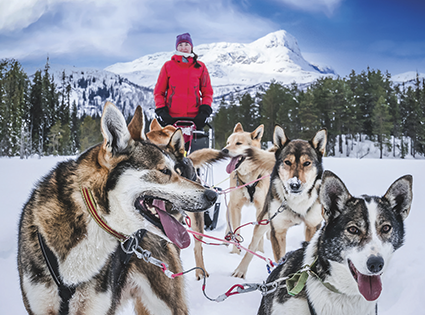Nine interesting facts about the Iditarod
The annual Iditarod, Alaska’s iconic sled dog race, began on March 4, 2023, with its traditional ceremonial start in Downtown Anchorage. While this year the number of teams participating is the smallest in the race’s history, the teams excitedly raced through city streets as they made their way to the actual race start, which was on March 5, at 2PM, in Willow Lake. This year the trail will be slightly different. Racers will go from Willow to Nome through what is known as the “Southern trail.” This trail has not been used since 2019. According to Alaska Public Media, it is relatively similar to the Northern trail: “Once teams get to Ophir, it cuts south through the Beaver Mountains to the ghost town of Iditarod. From there, there’s a lot of rivers running through Shageluk, Grayling, and Anvik before linking up with the main trail in Kaltag”. APM also mentioned that this trail is slightly longer and is known for its complexity. There’s plenty of mountain terrain and exposed racing next to the Yukon River. At the time of writing this article, Ryan Redington had crossed the finish line after 8 days, 21 hours, 12 minutes and 58 seconds on the trail. He is Joe Redington, Sr.’s grandson, who is one of the co-founders of the race and is known as the “Father of the Iditarod.” Here are some interesting facts about the “1000-mile race.”
1. Iditarod means “distant place” in the languages of Ingalik and Holikachu, spoken by the Athabaskan people. The race is meant to honor the tradition of the Iditarod Trail, a trail system that connected towns of Inland Alaska during the Gold Rush of the early 20th century. The first Iditarod was held in 1973. However, portions of the trail had been used by Native Alaskan Athabaskan and Inupiaq communities long before the arrival of Russian Fur traders in the 1800s. 2. While it is commonly referred to as the “1000-mile race”, the trail length is slightly smaller. The Northern Route, normally used in even years, is 975 miles and the Southern Rote, used in odd years is 998 miles. Recent modifications, like the 2015 and 2017 Fairbanks reroute because of lack of snow caused the race to be 979 miles. 3. The race has stopping points. There are currently 26 checkpoints on the northern route and 27 on the southern route where mushers have to check-in. They can fly supplies in advance like food or extra dog booties. In addition, there are three mandatory rests: a 24-hour layover that must be taken at any check point, and two 8-hour layovers, one at any checkpoint in the Yukon River and once at White Mountain. 4. The race was suspended in 1985 because inclement weather prevented supplies to be shipped to the different checkpoints. 5. After many Standard European Poodles in John Stuer’s team were hurt in the 1988 race, only northern breeds like Alaskan Malamutes and Siberian Huskies are allowed to race. 6. The record for the fastest winning time for the Iditarod is 8 days, 3 hours, 40 minutes, and 13 seconds and is held by Mitch Seavey since 2017. 7. Both Rick Swenson and Dallas Seavey hold the record for Most victories on the trail. Each has 5. 8. Libby Riddles, from Madison Wisconsin, was the first woman to win the Iditarod in 1985. 9. Not only does the winner get a prize. The musher that arrives in last place wins the “Red Lantern” Award. |
